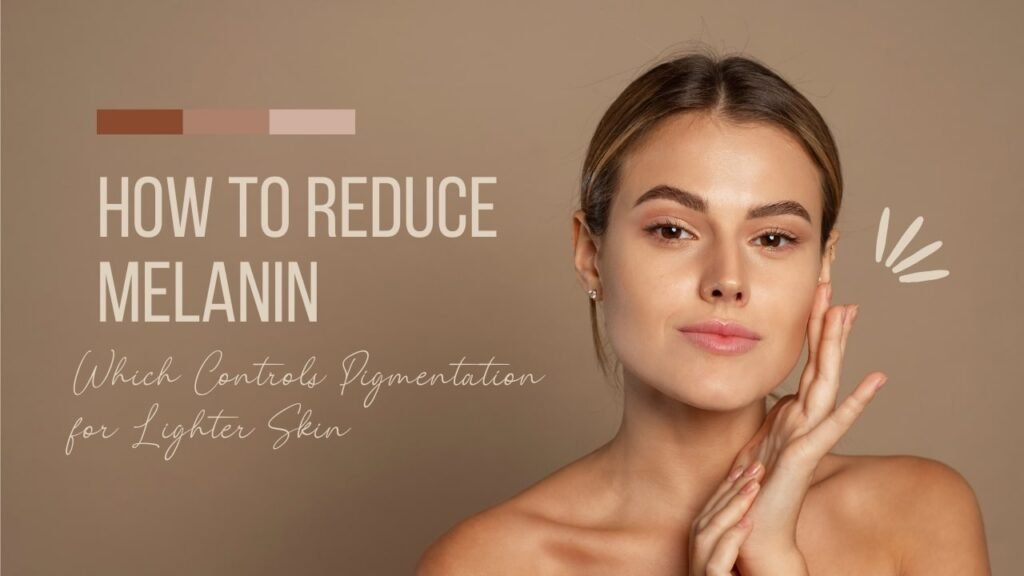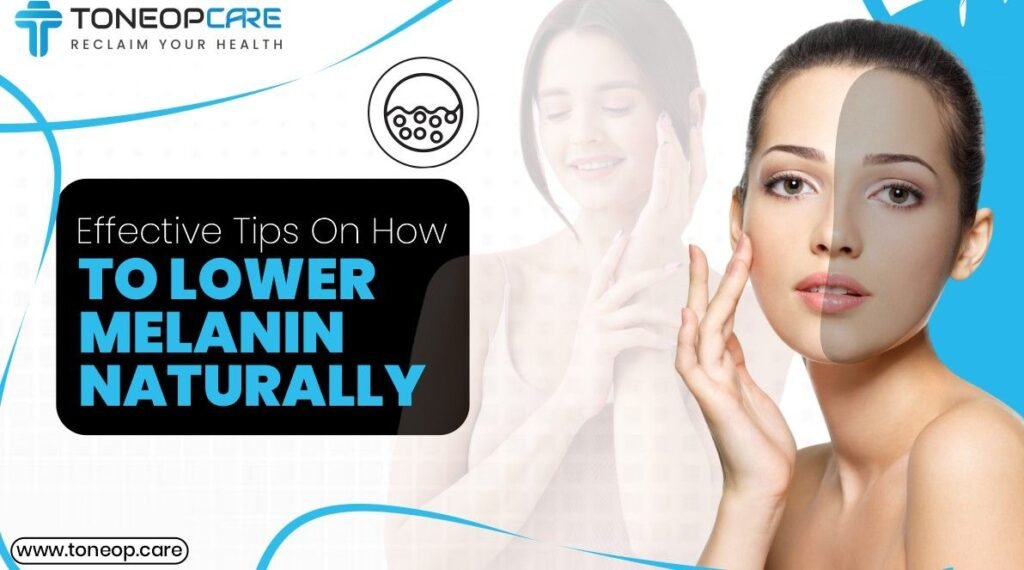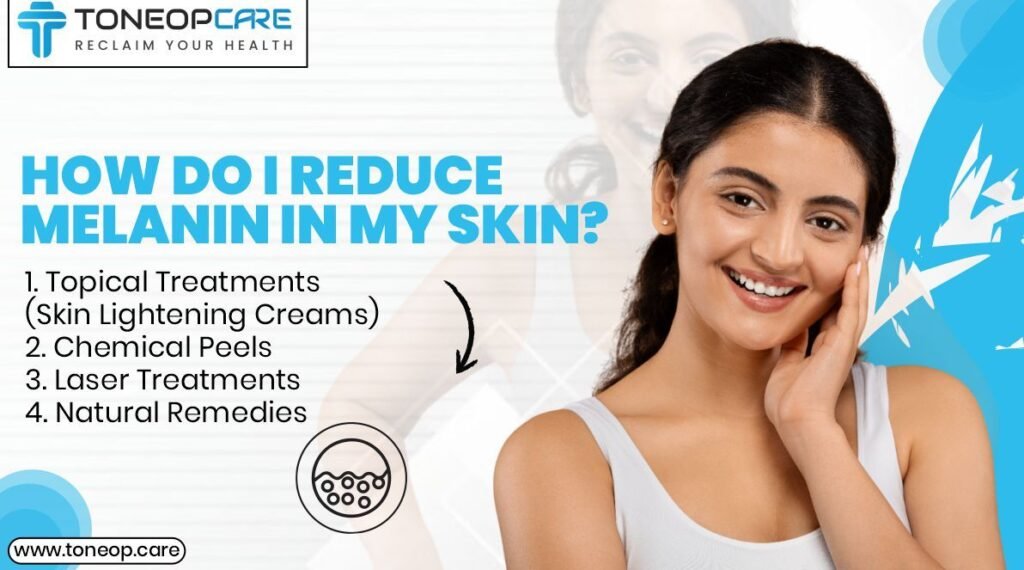Introduction
Melanin is the natural pigment that gives your skin, hair, and eyes their color. It protects your body from the harmful effects of ultraviolet (UV) rays. However, when melanin is overproduced, it can lead to dark patches, uneven tone, or hyperpigmentation — issues that many people wish to improve. Reducing melanin doesn’t mean removing it completely; instead, the goal is to regulate its production safely and achieve a clear, radiant complexion without harming the skin.
There are many methods to reduce melanin — from lifestyle changes and natural ingredients to dermatologist-approved treatments. This article explores proven, evidence-based ways to safely reduce melanin levels, the science behind pigmentation, and practical steps you can take for brighter, healthier skin.
Read More: Cómo quitar los mocos en la garganta rápido
Understanding Melanin and Its Role
Melanin is produced by special skin cells called melanocytes located in the deeper layers of the epidermis. These cells release melanin through a process called melanogenesis, which is mainly controlled by an enzyme called tyrosinase.
When your skin is exposed to the sun, tyrosinase activity increases, leading to more melanin production. This is the body’s natural defense mechanism against UV damage. However, excessive sun exposure, hormonal imbalance, inflammation, or certain medications can overstimulate melanin production, resulting in hyperpigmentation, dark spots, or uneven tone.
It’s important to remember that melanin plays a protective role. The aim should be to balance melanin production — not to remove it completely — since too little melanin can make your skin more vulnerable to sun damage and aging.

Causes of Excess Melanin Production
Before reducing melanin, understanding the triggers is crucial. Common causes include:
- Sun Exposure: Ultraviolet (UV) rays directly stimulate melanocytes to produce more pigment.
- Hormonal Changes: Pregnancy or hormonal medications can cause melasma, a form of hyperpigmentation.
- Post-Inflammatory Hyperpigmentation: Acne, cuts, burns, or rashes can leave behind dark spots.
- Genetic Factors: Some people naturally have higher melanin levels.
- Certain Medications: Some drugs increase skin sensitivity or stimulate melanin.
- Aging and Environmental Pollution: Both contribute to uneven pigmentation and dullness.
Top Ways to Reduce Melanin in Skin Naturally and Safely
1. Protect Your Skin from the Sun
The most effective and natural way to control melanin is sun protection. Since UV exposure is the primary trigger for excess melanin, daily sun protection should be your first line of defense.
- Use a broad-spectrum sunscreen (SPF 30 or higher) every day.
- Reapply sunscreen every two to three hours if you’re outdoors.
- Wear hats, sunglasses, and protective clothing.
- Avoid going out during peak sunlight hours (10 a.m. to 3 p.m.).
Consistent sun protection helps prevent new pigmentation and allows existing dark spots to fade faster.
2. Use Topical Ingredients that Inhibit Melanin Production
Several safe and scientifically backed skincare ingredients can help reduce melanin levels. These include both natural and medical-grade actives:
a. Vitamin C
Vitamin C is a powerful antioxidant that brightens the skin, neutralizes free radicals, and suppresses tyrosinase activity. Regular use helps fade dark spots and improves overall glow.
b. Niacinamide (Vitamin B3)
Niacinamide blocks the transfer of melanin from melanocytes to skin surface cells. It helps even out skin tone, reduces pigmentation, and strengthens the skin barrier.
c. Kojic Acid
Kojic acid, derived from fermented rice or fungi, is an effective natural skin-lightening agent. It inhibits the formation of melanin and is often used in creams or serums.
d. Arbutin
Arbutin is a plant-based compound that slows down tyrosinase activity. It gently lightens dark patches and provides a natural glow without irritation.

e. Licorice Extract
Licorice contains glabridin, a compound that prevents melanin production. It soothes the skin and reduces pigmentation naturally.
f. Retinoids (Vitamin A derivatives)
Retinoids help by increasing skin cell turnover, promoting renewal, and enhancing the absorption of other lightening ingredients. They’re especially effective for dark spots and uneven tone.
3. Exfoliate Regularly
Dead skin cells can make your skin appear darker and uneven. Regular exfoliation helps remove pigmented cells from the surface and encourages new, brighter cells to emerge.
- Chemical exfoliants like alpha hydroxy acids (AHAs) and beta hydroxy acids (BHAs) dissolve dead cells.
- Physical exfoliants (scrubs) can also help but should be used gently to avoid irritation.
- Over-exfoliation can trigger inflammation, which might worsen pigmentation, so moderation is key.
4. Adopt a Balanced Diet
What you eat also influences how your skin looks. While diet alone won’t drastically reduce melanin, it supports skin repair and protection.
Include the following foods in your diet:
- Vitamin C-rich foods: oranges, kiwis, strawberries, papaya
- Antioxidant foods: green tea, spinach, carrots, and tomatoes
- Omega-3 fatty acids: walnuts, chia seeds, and salmon
- Zinc and Vitamin E: nuts, seeds, and whole grains
Avoid excessive junk food, processed sugar, and alcohol, as they can increase oxidative stress, which stimulates melanin production.

5. Try Natural Home Remedies (With Caution)
Some natural ingredients can mildly lighten pigmentation if used regularly and safely.
a. Aloe Vera
Aloe vera gel contains aloesin, a compound known to inhibit melanin production. Apply pure aloe gel daily to soothe and brighten your skin.
b. Turmeric
Curcumin, the active compound in turmeric, helps block the enzyme tyrosinase and reduces melanin formation. Mix turmeric with yogurt or honey for a mild brightening mask.
c. Green Tea Extract
Green tea has antioxidants that can reduce the activity of melanocytes. Regular use may lead to clearer, brighter skin.
d. Potato Juice
Potatoes contain an enzyme called catecholase that may help fade dark spots and even skin tone.
e. Lemon Juice (Use Carefully)
Lemon juice has natural acids that exfoliate and lighten, but it can irritate sensitive skin. Always dilute it and apply sunscreen after use.
6. Professional Dermatological Treatments
For stubborn or deep pigmentation, professional treatments may be necessary. These are safe when performed by certified dermatologists.
a. Chemical Peels
These use controlled acids (like glycolic or salicylic acid) to exfoliate and renew the top layer of skin, reducing dark patches and improving brightness.
b. Laser Therapy
Laser treatments target and break down excess melanin in deeper layers. They are highly effective but must be done under expert supervision.
c. Microdermabrasion
A non-invasive procedure that gently removes dead and pigmented skin cells, revealing fresh, even-toned skin underneath.
d. Intense Pulsed Light (IPL) Therapy
This uses light energy to target pigmented areas and reduce melanin over multiple sessions.
e. Prescription Creams
Dermatologists may prescribe creams with hydroquinone, tretinoin, or mild corticosteroids for short-term use to reduce pigmentation.

What Not to Do When Reducing Melanin
- Avoid unregulated bleaching creams. Many contain harmful ingredients like mercury or steroids that can cause permanent damage.
- Do not overuse strong exfoliants or acids. This can inflame your skin and worsen pigmentation.
- Don’t expect overnight results. Safe brightening takes time and consistency.
- Avoid excessive sun exposure. Even the best treatments fail if you don’t protect your skin daily.
Tips for Long-Term Maintenance
- Always use sunscreen, even indoors.
- Stay hydrated and maintain a balanced diet.
- Follow a consistent skincare routine.
- Include antioxidants and vitamins in your regimen.
- Visit a dermatologist for regular checkups if you have chronic pigmentation issues.
Remember: skin brightening is a journey. Consistency, patience, and safety are the keys to achieving lasting, healthy radiance.
Read More: Cómo quitar los mocos en la garganta rápido
Conclusion
Decreasing melanin in your skin safely requires a balanced approach — one that combines protection, nourishment, and science-backed skincare. While it’s impossible and unhealthy to eliminate melanin completely, you can certainly manage its overproduction to achieve clearer, more even-toned skin.
The key lies in prevention — protecting your skin from the sun, using proven brightening ingredients, maintaining a nutrient-rich diet, and choosing professional treatments when necessary. Avoid shortcuts or harsh products that promise instant results. Healthy skin is not just lighter; it’s stronger, more resilient, and glowing from within. By following consistent, gentle, and expert-recommended practices, you can gradually reduce excess pigmentation and restore your skin’s natural balance and brightness.
FAQs
1. How long does it take to reduce melanin in the skin?
Visible improvement usually takes 8 to 12 weeks with consistent use of sunscreen, brightening serums, and a healthy lifestyle. Deep pigmentation may take several months.
2. Can natural remedies really reduce melanin?
Yes, but results are gradual. Natural ingredients like aloe vera, turmeric, and green tea can help control melanin production mildly when used regularly and safely.
3. Is it safe to completely remove melanin?
No. Melanin protects your skin from UV radiation and aging. The goal should be reducing excess melanin, not removing it entirely.
4. What foods can help reduce melanin naturally?
Vitamin C-rich fruits, green leafy vegetables, nuts, seeds, and antioxidant-rich foods support balanced melanin production and healthier skin.
5. Will pigmentation return after stopping treatment?
Yes, it can return if the underlying causes, such as sun exposure or hormonal changes, persist. Regular maintenance and sun protection are essential to sustain results.